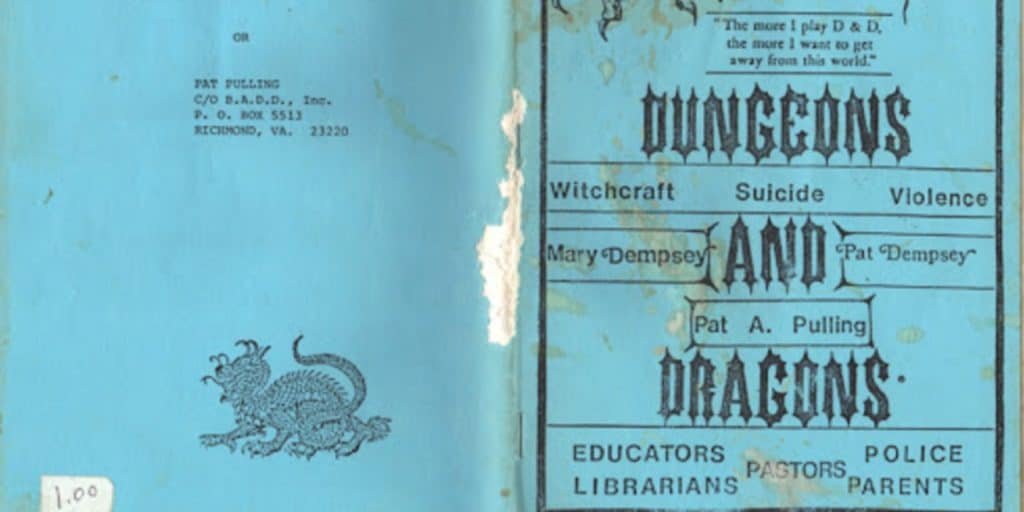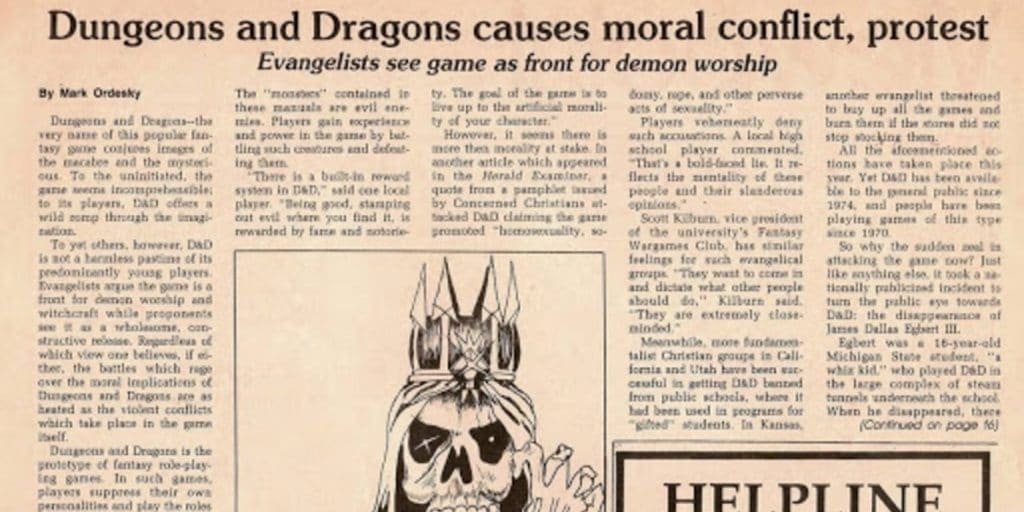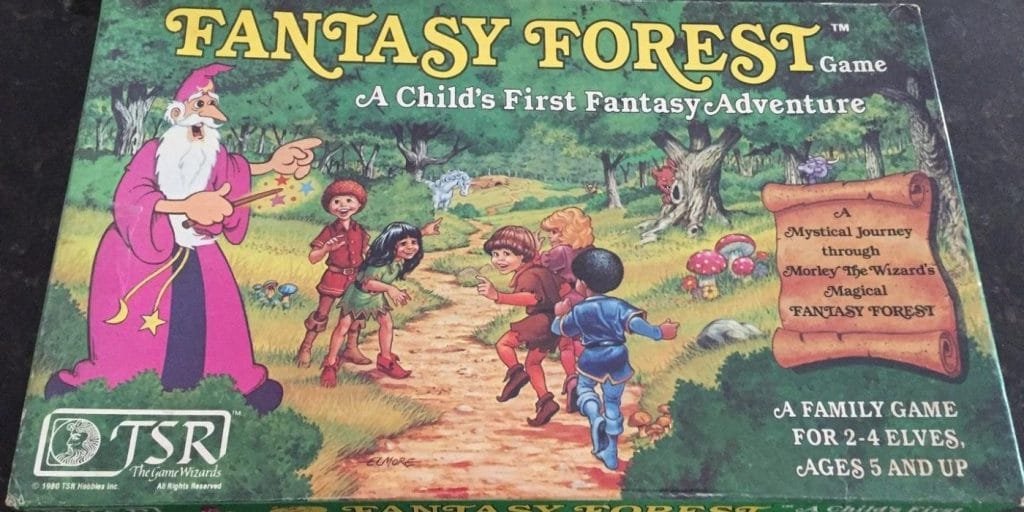I was a kid the first time I was exposed to Dungeons & Dragons. Although, it might not be in the way you're thinking. It's certainly not the way most people were exposed to the tabletop RPG, which now has a pretty wholesome and even kid-friendly reputation.
My grandfather was a Southern Baptist preacher, and one day while I was exploring his home office, I came across a Walmart bag of religious pamphlets and propaganda – tied up loosely inside the plastic bag like trash. I assume (but don't know for sure) that it was stuff a bit too zealous for him. Stuff a little too nutty, which is why he'd put them in the bag.
Out of blatant childhood curiosity, I checked out everything in there, and one pamphlet stood out to me. On the cover was a dragon with a forked tongue. It looked super cool, so of course I was going to crack that bad boy open and read it. What I found was some strange anti-Dungeons & Dragons literature. It told readers the dangers of fantasy role-playing, and how it was a surefire way to pinpoint a Satanist.
How Dungeons & Dragons Got A Satanist Reputation

Back then, I was pretty into Lord of the Rings and fantasy, so I found it both silly and stupid to find a pamphlet that explained D&D, LotR, and wearing black t-shirts as a gateway to devil worship. Not only that, but apparently playing D&D could make me murder my family and kill myself – all in the name of Lucifer. Even at the age of 10 or 11, I knew this was pretty stupid.
Now, as an adult, I've often wondered why organizations like B.A.D.D. existed. As it turns out, the whole Satanic reputation that D&D got can really be traced back to one incident. Sure, the images of demons and devils on the cover of D&D books and ads didn't help. And the naked lady being offered as sacrifice on the cover of Eldritch Wizardry hasn't especially aged well. But the game really came to national attention (negatively, I might add) in 1979, when a college student named James Dallas Egbert III vanished.
James Dallas Egbert, D&D, and the Blame Game

If you're unfamiliar with the story, it goes like this: a college student named James Dallas Egbert III went missing, and his parents hired a private investigator named William Dear to look for him. Dear found D&D stuff in Egbert's room. Then, Dear came to the conclusion that Egbert had gone mad from playing the tabletop RPG and had ventured into the labyrinthine tunnels beneath Michigan State University.
The press had a field day with this information, and D&D was proverbially sacrificed for the masses on national TV (kinda like that lady on the cover of Eldritch Wizardry). Eventually, Egbert showed up in Louisiana. He'd fled college because of academic pressure, but the damage to D&D was already done. Blaming Dungeons & Dragons made good headlines and several bad movies (including Mazes & Monsters, a horrible film starring Tom Hanks that was inspired by the Egbert disappearance).
Morley the Wizard: D&D Gets A Kid-Friendly Mascot

Out of all this blame and a now-sullied reputation, the people at TSR decided to try out a new mascot named Morley the Wizard. Games like Fantasy Forest were promoted as “A child's first fantasy adventure!” It was a big difference from the devils and evil monsters seen on D&D books from years past.
TSR also went through an artist purge, where nearly every artist on staff was fired. The new ones came in with a new job: make D&D look less like devil-worship. This started the drawings of wizards and dragons that are so recognizable today. Illustrated ads showed children playing Dungeons & Dragons with their friends. Photo ads in the early '80s showed teens and young adults smiling and having fun around a table. This wasn't evil, those ads seemed to say, it was just a fun game!
Dungeons & Dragons Is Always Changing
The image of Dungeons & Dragons has certainly changed over the years. The 5th edition books look far more professional than the early days of D&D, when crude images of silly monsters adorned the covers. Even scarier 5e covers, like the beholder on the front of The Monster Manual, doesn't look nearly as insidious as the human sacrifices and demons that used to be slapped on covers.
Although it came from negative press and public smear campaigns, a more kid-friendly D&D isn't necessarily a bad thing. It means more young people are being exposed to the game. It's probably one of the reasons the tabletop RPG is more popular now than ever. I even play it with my oldest child now, and we have a great time.
The intentions of Dungeons & Dragons were never evil. It's why forty years later, D&D is mainstream – and why organizations like B.A.D.D. are all but forgotten.

